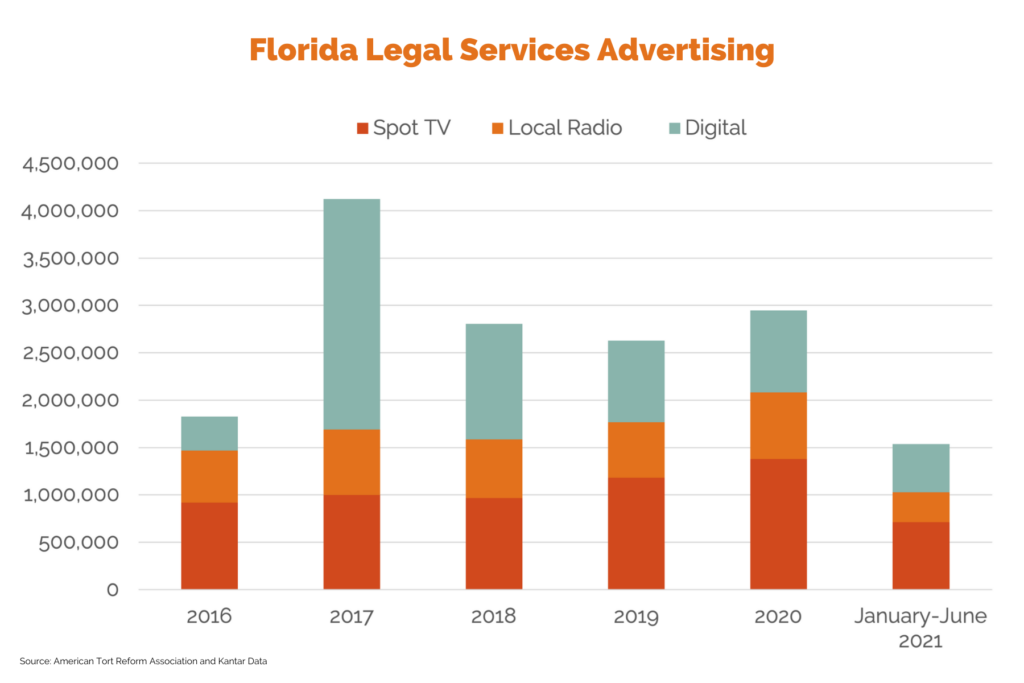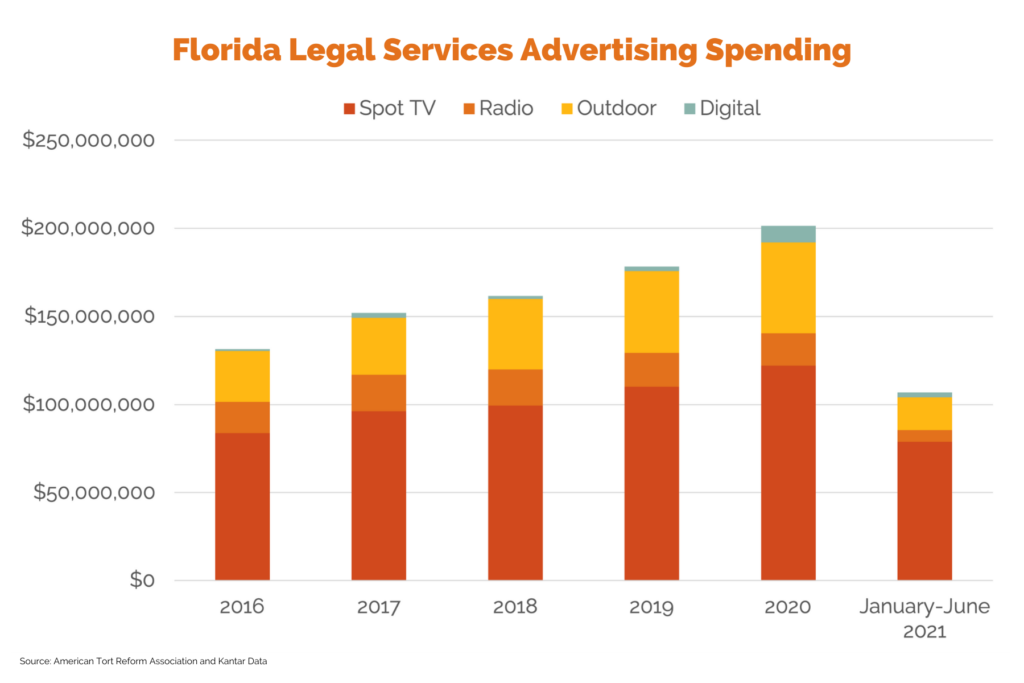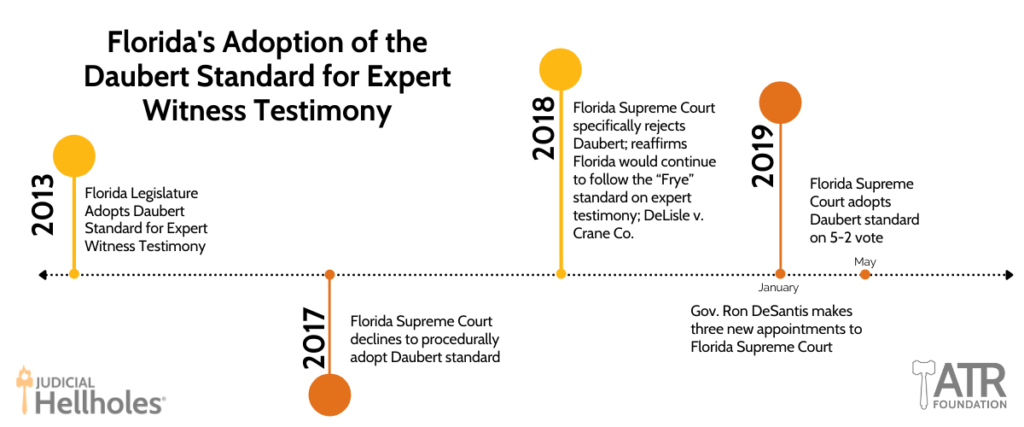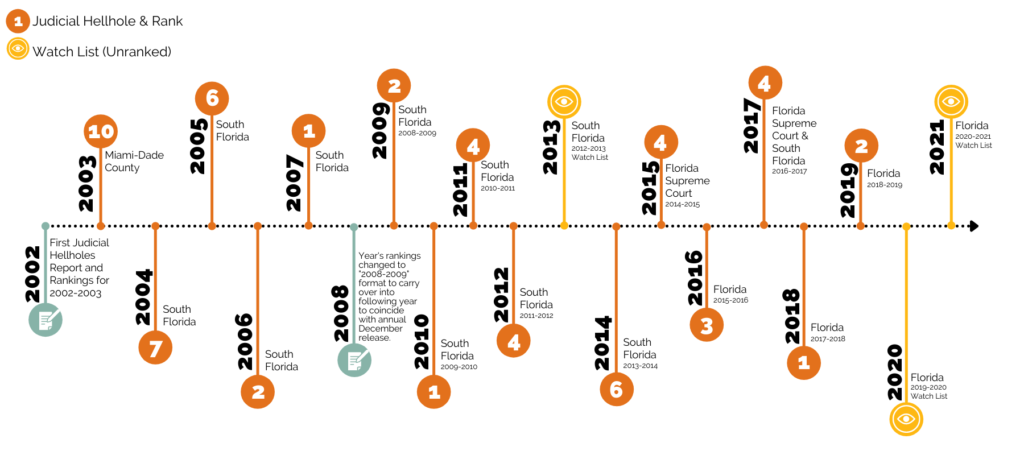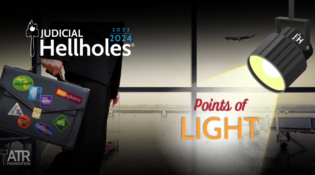Top Recurring Issues
Personal Injury Protection
The history of fraud in Florida’s “no-fault” personal injury protection (PIP) system has been long chronicled in the Judicial Hellholes® report. Under the current PIP system, insurers are required to pay up to $10,000 for medical expenses stemming from auto accidents no matter who is at fault. Florida lawyers and their associates have been abusing the system for years, contributing to why Floridians have some of the highest car insurance rates in the country.
In 2018, the Florida legislature considered a bill that would have repealed the PIP system and replaced it with a bodily-injury coverage requirement, but the bill died in committee. It was criticized because the proposed changes would have increased costs for motorists and many said it was simply “PIP by another name.” The House considered another bill that was projected to save motorists on average $81 a year, but that effort failed as well.
A 2017 multi-million dollar insurance fraud scheme by “corrupt lawyers” in South Florida shows an overwhelming need for “no-fault” PIP reform. The lawyers tricked clients into believing they had lucrative lawsuits, encouraged them to visit a network of chiropractic clinics, and convinced them to have expensive treatments, even when uninjured. Accident victims were pushed to make dozens of unnecessary visits to the clinics until their bills reached the maximum $10,000 PIP benefit.
These South Florida lawyers were not the only ones involved in this type of litigation, as the number of PIP cases reached a record high in 2017. The PIP system, which was supposed to reduce the number of lawsuits, instead produced more than 60,000 new cases last year alone—a stunning increase of almost fifty percent in one year. PIP cases are by far one of the largest sources of litigation in Florida, representing over half of the state’s overall insurance litigation. These lawsuits significantly drive up consumer costs and directly impact the average Floridian. Some Florida drivers saw their premiums for PIP coverage increase by more than 50% in 2017 alone.
Phantom Damages & Letters of Protection
Plaintiffs’ lawyers have also long abused what are known as “letters of protection” to inflate medical expenses for the purpose of lawsuits. Letters of protection are agreements between a person who needs medical care, his or her lawyer, and a healthcare provider under which the healthcare provider agrees to not seek to collect a fee for medical treatment from the patient, but wait to collect out of an expected settlement or judgment. Letters of protection can serve a legitimate purpose when a person is uninsured and unable to pay for medical expenses. However, some Florida lawyers recommend that their clients not use their insurance to cover medical expenses, but rely on a letter of protection.
Under Florida law, at trial, jurors learn the initially invoiced amount of medical expenses, which is essentially a “sticker price” that is often three or more times the amount that is ultimately accepted by the healthcare provider as full payment. After a verdict, Florida law requires judges to adjust the award to reflect the actual amount of medical expenses paid and accepted, a process called a “set off.” Florida’s personal injury lawyers often use letters of protection to avoid this set off. By avoiding evidence of the actual value of medical treatment, there is no amount paid for a judge to set off the award.
This type of abuse benefits no one but the lawyers and the medical clinics that may be in cohorts with them. The lawyers get to inflate the damage award and collect a larger contingency fee. The medical provider gets paid a rate that is much higher than market value. The plaintiff, however, has these high rates taken from his or her share of the judgment, even if they would have been covered by insurance.
At a February 2019 hearing before a committee of the Florida House of Representatives, a representative of the popular supermarket Publix testified that the grocer’s costs run 65% higher per claim in Florida than in other states in which it operates, and 50% higher in South Florida than the rest of the state, precisely because of this type of abuse. Letters of protection, she noted, result in “manufactured medical damages that have no basis in reality.”
Legislation can ensure that jurors receive accurate information on the actual value of medical expenses and prohibit abuse of letters of protection. The legislature should also revisit the need to place reasonable constraints on subjective and unpredictable noneconomic damage awards, which are particularly important for preserving access to affordable medical care.
Two Main Causes for Phantom Damages
In Florida, the jury only hears the billed rates. Florida law prohibits introduction of evidence regarding medical bills that have been discounted or written off by health care providers. While a trial court judge will later “set off” (deduct) amounts not paid from the verdict, South Florida personal injury lawyers have developed a way to avoid such a reduction. They often enter a “Letter of Protection” with a client’s doctor, which is an agreement to defer payment of medical expenses until after a lawsuit results in a judgment. Since there is no amount “actually paid,” only the amount billed, the arrangement avoids a set off, leading to an excessive award.
Medically unnecessary procedures are a second cause of inflated medical damages. Thousands of fraudulent or unnecessary procedures are ordered in Florida every year. This occurs for the purpose of inflating the value of personal injury claims. Florida law requires plaintiffs to prove that their medical treatment is medically necessary. If a defendant presents evidence that the plaintiff’s treatment was not medically necessary, however, Florida courts have held that such an argument is tantamount to accusing the plaintiff’s treating physician of medical malpractice, entitling the plaintiff to a so-called “Stuart instruction.”
Bad Faith
Florida drivers have had to pay higher auto insurance rates as a result of lawsuits in which personal injury lawyers claim that the insurer whose policyholder caused the accident later acted in bad faith to delay or avoid paying a claim. These so-called “third-party bad faith lawsuits” are filed even when insurers promptly offer to pay a policy’s limit. In ginning up such claims, plaintiffs’ lawyers often engage in “gotcha” tactics, such as ducking claims adjusters’ phone calls or coaching their clients to avoid meetings until the bad-faith deadline has passed without a settlement of the claim. Many states do not authorize third-party bad faith lawsuits against insurers, but the Florida Supreme Court has historically allowed such claims and permitted lawyers to manipulate the system.
Bad faith lawsuits targeting insurers continue to be fertile ground for trial lawyers looking to game the system, but in 2020, the Florida legislature continued to avoid addressing the larger issues at play. This is especially disappointing as more than 80 percent of Floridians think it is unfair that insurance rates rise due to excessive lawsuits and inaccurate claims against insurance companies. Currently, most often in situations where there is clear liability, substantial damages, and low policy limits, trial lawyers use delay tactics and multi-pronged, impossible-to-satisfy demands to set insurers up for a bad faith action.
Legislation introduced in 2020 would have established a “reckless disregard” standard for third-party bad faith lawsuits, and procedures for settling claims with multiple claimants in order to avoid bad faith.
The Florida Legislature passed reforms in 2019 designed to curtail unnecessary bad faith litigation against insurance companies. This new law will provide a more reasonable time for insurers and their policyholders to resolve disputes through an appraisal process.
Bad faith lawsuits can result in eye-popping numbers. In just one notable bad faith action, Harvey v. GEICO, the insurer tendered the full $100,000 policy limits nine days after the accident, but was ultimately hit with an $8.47 million judgment.
Legislators must address the process that leads to these distorted results or risk jeopardizing the judicial system’s legitimacy.



